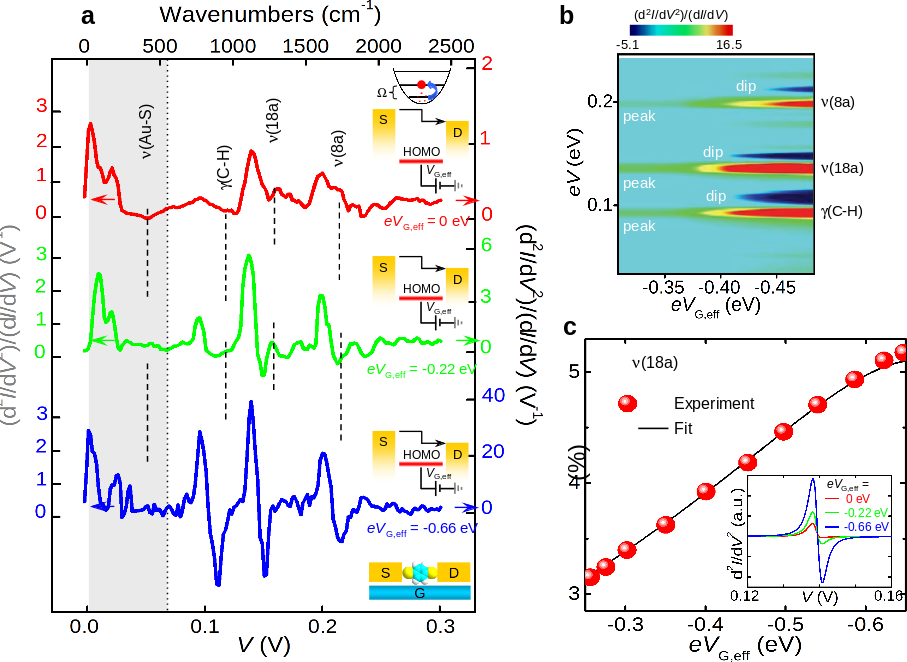




| 09:00-10:40 | Tu1: Transport in electronic devices |
| 10:40-11:20 | Coffee break |
| 11:20-13:00 | Tu2: Surface diffusion and migration |
| 13:00-15:30 | Lunch break (on your own) |
| 15:30-16:40 | Tu3: Chemistry and growth of graphene |
| 16:40-17:20 | Coffee break |
| 17:20-18:50 | Tu4: Electron-phonon coupling in graphene |
| 19:00-21:30 | Poster session A |
Chair: D. Sanchez-Portal, San Sebastián, Spain
Invited talk
IETS of single molecule transistors
1Department of Applied Physics, Yale University, USA
2Department of Electrical Engineering, Yale University, USA
3Department of Applied Physics, Kyung Hee University, South Korea
4Department of Physics, Seoul National University, South Korea
Electron devices containing molecules as the active region have been an lively area of research over the last few years. In molecular-scale devices, a longstanding challenge has been to create a true three-terminal device; e.g., one that operates by modifying the internal energy structure of the molecule, analogous to conventional FETs. Here we report [1] the observation of such a solid-state molecular device, in which transport current is directly modulated by an external gate voltage. We have realized a molecular transistor made from the prototype molecular junction benzene dithiol (BDT), and have used a combination of spectroscopies to determine the internal energetic structure of the molecular junction, and demonstrate coherent transport [2,3]. Resonance-enhanced coupling to the nearest molecular orbital is revealed by inelastic electron tunneling spectroscopy (IETS), demonstrating for the first time direct molecular orbital gating in a molecular electronic device [1].

Figure 1: (a) Gate dependent IETS (4.2K) of a BDT transistor. The left-hand y axis corresponds to the grey shaded region, and the various right-hand y axes (with different scales) correspond to spectra in the non-shaded region. (b) Two dimensional color map of the gated IET spectra. (c) Persson-Baratoff resonantly enhanced IETS model of the ν(18a) mode.
[1] H. Song et al., Nature 462, 1039 (2009)
[2] H. Song et al., J. Appl. Phys. 109, 102419 (2011)
[3] H. Song et al., J. Phys. Chem. C. 114, 20431 (2010)